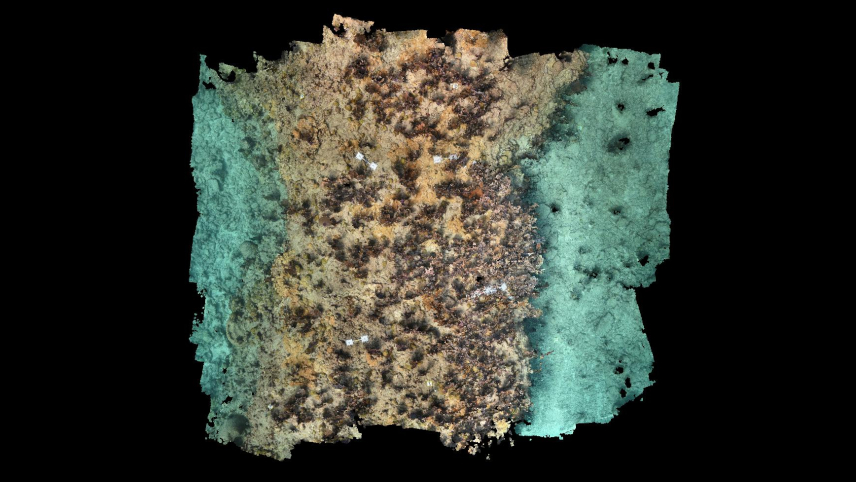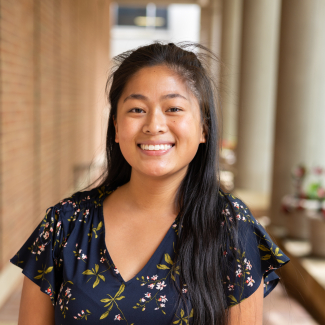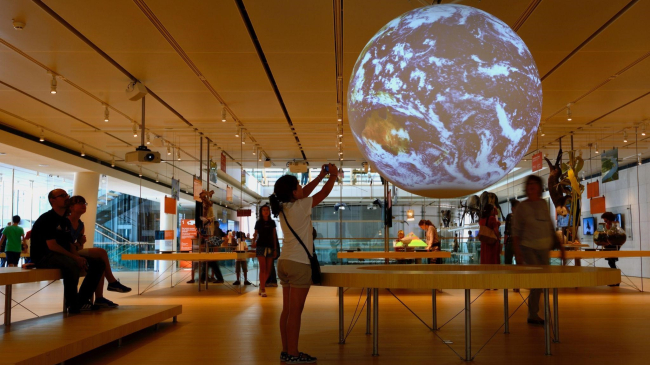Michaela Wong, a class of 2022 EPP/MSI undergraduate scholar and rising senior at the University of Hawaiʻi at Hilo, spent her 2023 summer interning at the National Center for Coastal Ocean Science Beaufort Lab in North Carolina with the Coastal Resilience, Restoration, and Assessment Branch. Her project contributed to the on-going evaluation of Mission: Iconic Reefs offsite link (M:IR), a collaborative project to restore nearly three million square feet of coral reefs in the Florida Keys. Because M:IR is a large undertaking, obtaining baseline structural complexity measurements (Michaela’s project focus) is critical to accurately evaluating its success throughout the process.
Michaela Wong, an EPP/MSI scholar, in front of the NOAA Beaufort Lab where she completed her 2023 EPP/MSI summer internship. (Image credit: Hailey Poole)
Michaela used 3D models constructed from underwater images to assess structural complexity of reef sites within the Florida Keys National Marine Sanctuary. Structural complexity refers to the suite of metrics that describes the physical 3D shape of the coral reef. An area with higher structural complexity includes corals of varying shapes and sizes, while areas with lower structural complexity might have less variation in depth and shapes of corals. Measuring structural complexity is critical to assess the health of restored reefs, as it can have a large impact on overall ecological functions on coral reefs. The findings of this summer project provided the M: IR team with two primary products and insights: 1) reusable code to quantify structural complexity in the future, and 2) a glimpse at how biotic (e.g. living organisms) and abiotic features (e.g. reef topography) affect structural complexity at varying measurement scales and habitat types.

Michaela plans to extend her work with the M:IR team by integrating species in the reef community into analysis of reef structural complexity. Michaela hopes to use her combined experiences from her undergraduate degree and time with the EPP/MSI program to contribute scientifically and culturally meaningful research with NOAA.
I am beyond grateful for this summer opportunity ... Working with [the Mission: Iconic Reefs] team allowed me to become a better scientist as they pushed me to think critically about how the condition of the coral reef impacts ecological functions and how we go forward in analyzing these systems.

Michaela is a 2022 EPP/MSI undergraduate scholar majoring in marine science at the University of Hawaiʻi at Hilo.



